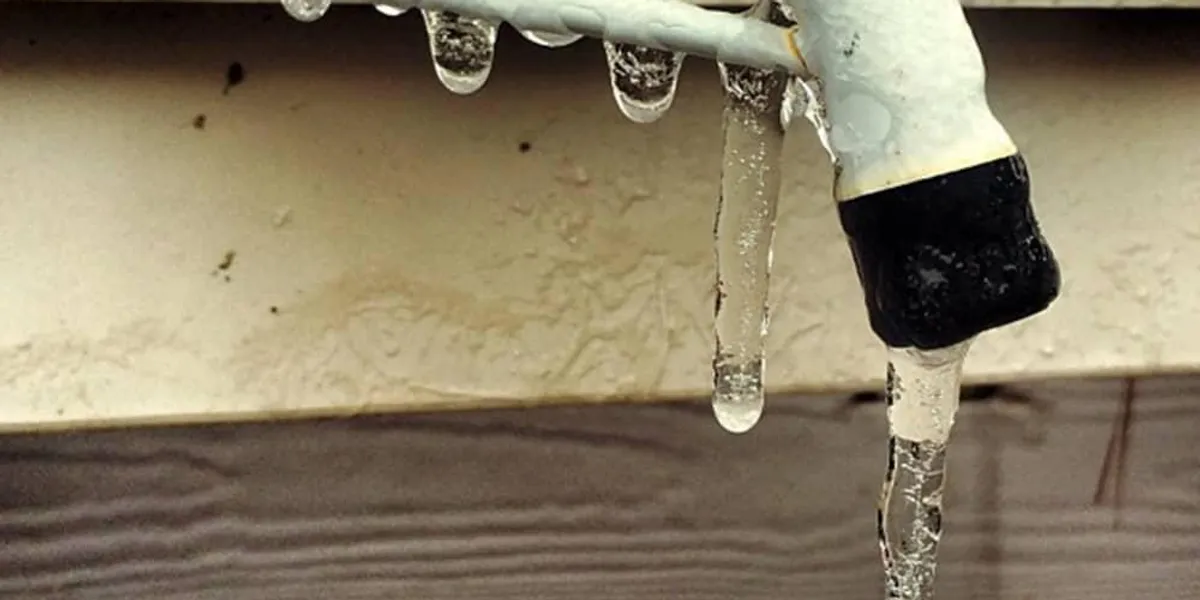Essential Tips for Preventing Frozen Plumbing in Cold Weather Seasons
Essential Tips for Preventing Frozen Plumbing in Cold Weather Seasons
Blog Article
The content below on the subject of Helpful Tips to Prevent Frozen Pipes this Winter is without a doubt enlightening. Give it a try and draw your own personal findings.
:strip_icc()/snow-outdoor-faucet-pipes-4af65d1e5e904fb1aa7bf74071fe5d89.jpg)
Winter can ruin your pipes, specifically by freezing pipelines. Right here's exactly how to stop it from taking place and what to do if it does.
Intro
As temperatures decrease, the danger of frozen pipelines boosts, potentially resulting in costly repairs and water damages. Comprehending how to prevent frozen pipes is important for homeowners in cool environments.
Prevention Tips
Insulating at risk pipes
Cover pipes in insulation sleeves or make use of warm tape to secure them from freezing temperature levels. Focus on pipes in unheated or exterior areas of the home.
Home heating strategies
Maintain interior rooms properly heated up, especially areas with plumbing. Open up cupboard doors to enable cozy air to circulate around pipelines under sinks.
Just how to recognize icy pipes
Seek lowered water circulation from faucets, unusual odors or sounds from pipes, and noticeable frost on revealed pipelines.
Long-Term Solutions
Structural modifications
Think about rerouting pipes away from outside walls or unheated locations. Include added insulation to attic rooms, cellars, and crawl spaces.
Updating insulation
Invest in premium insulation for pipelines, attics, and walls. Appropriate insulation helps preserve consistent temperatures and minimizes the risk of icy pipes.
Shielding Outside Pipes
Garden tubes and outside taps
Disconnect and drain garden tubes before winter. Install frost-proof faucets or cover exterior faucets with shielded caps.
Understanding Frozen Pipes
What triggers pipelines to ice up?
Pipelines freeze when subjected to temperatures listed below 32 ° F (0 ° C) for extended periods. As water inside the pipelines freezes, it increases, putting pressure on the pipeline wall surfaces and potentially causing them to rupture.
Risks and damages
Icy pipelines can bring about water system interruptions, building damages, and pricey repair work. Ruptured pipes can flooding homes and trigger considerable structural damages.
Indicators of Frozen Pipeline
Determining frozen pipelines early can prevent them from rupturing.
What to Do If Your Pipes Freeze
Immediate activities to take
If you suspect frozen pipelines, keep taps available to eliminate pressure as the ice thaws. Use a hairdryer or towels taken in hot water to thaw pipelines gradually.
Final thought
Stopping icy pipelines needs proactive measures and quick feedbacks. By recognizing the causes, indicators, and safety nets, house owners can secure their plumbing throughout winter.
6 Proven Ways to Prevent Frozen Pipes and Protect Your Home
Disconnect and Drain Garden Hoses
Before winter arrives, start by disconnecting your garden hoses and draining any remaining water. Close the shut-off valves that supply outdoor hose bibs and leave the outdoor faucet open to allow any residual water to drain. For extra protection, consider using faucet covers throughout the colder months. It’s also important to drain water from any sprinkler supply lines following the manufacturer’s directions.
Insulate Exposed Pipes
Insulating your pipes is an effective way to prevent freezing. Pipe insulation is readily available at home improvement stores and is relatively inexpensive. Pay close attention to pipes in unheated areas such as the attic, basement, crawl spaces, or garage. Apply foam insulation generously to create a buffer against the cold. You can also wrap your pipes in heat tape or thermostat-controlled heat cables for added warmth.
Seal Air Leaks
Inspect your home for any cracks or openings that could let in cold air. Seal any holes around the piping in interior or exterior walls, as well as the sill plates where your home rests on its foundation. Additionally, make sure to keep your garage door closed unless you’re entering or exiting. Leaving it open creates a significant air leak that can lead to frozen pipes.
Allow Warm Air Circulation
During cold snaps, it’s essential to allow warm air to circulate evenly throughout your home. Leave interior doors ajar to promote better airflow. Open kitchen and bathroom cabinets to help distribute heat consistently around the rooms. If you have small children or pets, be sure to remove any household chemicals or potentially harmful cleaners from open cabinets for safety.
Let Faucets Drip
A small trickle of water can make a big difference in preventing ice formation inside your pipes. When temperatures drop significantly, start a drip of water from all faucets served by exposed pipes. This continuous flow helps prevent the water from freezing. Additionally, running a few faucets slightly can relieve pressure inside the pipes, reducing the chances of a rupture if the water inside does freeze.
https://choateshvac.com/6-proven-ways-to-prevent-frozen-pipes-and-protect-your-home/

I recently found that article about Helpful Tips to Prevent Frozen Pipes this Winter when doing a lookup on the web. I beg you take a moment to distribute this write-up if you liked it. We take joy in reading our article about 6 Ways to Prevent Frozen Pipes.
Click Here Report this page